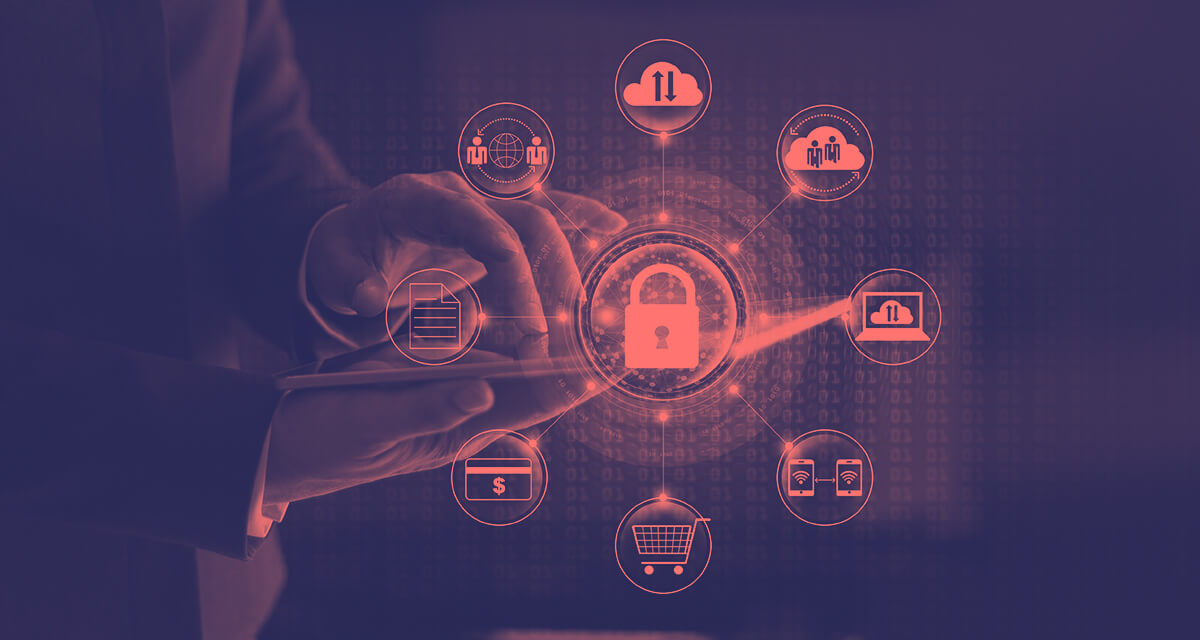

In today’s world, cyber crimes have increased to an all-new high due to the increase in internet use and networking activities. Many companies and businesses have suffered huge losses due to data breaches and theft. This is why it has now become a necessity to have cyber security systems installed to avoid any kind of attacks.
No matter how many new cybersecurity measures are taken, hackers and attackers find newer ways to bypass those. This means cybersecurity methods. There are many types of cyber security threats lurking in the shadows of trusted websites or applications and weak networks.
It is almost impossible to identify unless you have powerful security systems installed or you are an expert. Moreover, many people prefer working from home or having meetings online, which makes us vulnerable to pdf, messaging, and email scams.
Cybersecurity threats are spreading like wildfire, and we need to protect ourselves so that we do not suffer from data theft or other losses. To help you identify these threats, here is a list of the top cybersecurity threats that people commonly encounter. We have also provided their solutions so that you may remain protected.
To know all about different cyber security threats and their fixes, keep reading this article until the end.
In order to reduce our exposure to these threats and fight back, the first thing we need to do is to understand them. The complexity of these security issues makes them almost impossible to solve. That is why we must focus on protecting ourselves before these threats are encountered.
Malware is an umbrella term that covers several cyber threats like backdoors, trojans, spyware, ransomware, etc. It is among the most extremely dangerous and malicious cyber security threats that are complex and advanced enough to destroy your data and devices.
Malware steals, locks, encrypts, hijacks, copies, and deletes data making it impossible for you to recover it. The most common ways they enter a device are through hard drives, USBs, downloads, installations, or security hacks.
Ransomware is one of the most common and dangerous types of malware. After entering your computer, it locks users out completely and withholds all folders, information, and data until they are given a ransom in exchange.
Getting your data back from these hackers is almost impossible until that ransom amount is paid. You can get ransomware by visiting an infected link or website or downloading a disguised virus. Even after paying the ransom, it is unlikely that the hacker will fully give back the control or information.
Social engineering is one of the easiest ways a hacker can enter your system. This is because it is much simpler to trick a human than to breach a protection firewall or a security system.
In social engineering, security attacks occur due to mistakes or negligence of a human. Two of the most common social engineering attacks are explained below with their solutions.
It is a type of social engineering attack in which cyber hackers disguise themselves and trick people into believing they are trustworthy. As a result, people provide these hackers with sensitive information about them, which leads them to download certain viruses or malware. The most common type of phishing attack is receiving an unusual email or link to open.
When you come across a link or a survey that looks doubtful, you can identify whether it is a phishing attack or not by the following signs,
To protect yourself from phishing attacks, keep the following points in mind.
Smishing is short for SMS-based phishing. It is a type of phishing that is getting common nowadays. Smishing always occurs through messaging apps, offline or online. However, phishing requires a working WiFi connection for web browsing and email.
In smishing, people receive SMS on their phones containing links to open, codes to send, or simply asking for replies. If you open the link or reply, your phone will be hacked.
Smishing is gaining popularity because many companies, like Google, Outlook, etc., are constantly upgrading their system to catch phishing and security attacks. Hence, hacking through SMS is a lot easier for them.
Common examples of smishing attacks include the following,
If you want to avoid SMS phishing attacks, then be careful about the following.
A new way of hacking your device is by using PDFs. People receive emails with PDF attachments, asking you to open and read them. They may say that the security policies have been updated or new policies have been introduced.
When you open the PDF to read it, malicious ransomware or malware enters your device and steals and copies your sensitive data. These PDF scams are very effective because most people use this way to communicate officially, so we usually do not doubt them.
Moreover, in offices and businesses, PDFs are commonly shared by email and USB transfers. Hence hackers take full advantage of this.
To avoid any kind of PDF scams, follow the guidelines below.
Credential theft is one of the most common ways through which hackers usually gain access to our devices. In credential stuffing, hackers steal the login credentials of individuals.
Many people use the same passwords for different websites, and when a hacker finally logs into one website, he gains access to all other websites and accounts. This results in the theft of data and personal identities.
In the past, many such cases have occurred in which the same login credentials were identified for different websites, which resulted in the loss of thousands of data.
Avoid credential stuffing or theft by following the instructions given below.
Sharing important files or emails accidentally to everyone has been done by all of us once in a lifetime. And this is the reason for a number of security attacks in recent times.
This specific cybersecurity threat can cause the sharing of data with unwanted people. This can lead to data theft and encryption. Unintentional sharing can also lead to data leaks to the public, who may use it for unlawful purposes.
Accidental sharing is the main reason for hacks and security attacks in companies and businesses where employees have permission to share folders.
Here is how to protect yourself from security breaches resulting from unintentional sharing.
The ‘man in the middle attack,’ also known as ‘machine/monster in the middle, is one of the riskiest security breaches. In this security threat, the hacker or the hacking device is successful in gaming access to any particular line of communication, such as telephone or mobile phone calls.
They remain anonymous and quiet in the middle between the two people communicating, hence the name. The complete procedure of a MITM attack is defined below.
MITM attacks are very common when it comes to breaching the security systems of large companies and businesses in order to steal important information. For example, if you receive a call from the bank, you will not hesitate to tell all your information. However, it could be possible that a middleman may have intercepted the line of communication.
Avoid all kinds of middleman attacks by following the guidelines below.
Several other parties are also connected whenever two parties are involved in the business. Usually, a cyber attack occurs through a third party. The Cyber Attackers gain access to and breach the system through the weak network security systems of the third party.
You can avoid third-party security attacks by adhering to the instructions given below.
Most of the time, configuration inadequacies can lead to extreme security breaches. This is all because of weak links, networks, or outdated security systems. Even the slightest of human errors, such as leaving the passwords at default, can result in security attacks.
Minimize the chances of security attacks by configuration inadequacies by following these instructions.
Cyber hygiene is a term referring to frequent upgradation and regular cleanups. This contains all the activities that decrease any chances of cyber attacks or security breaches.
Faulty cyber hygiene means using unsecured WiFi connections, default passwords, weak VPNs, etc. To maintain your cyber hygiene, make sure you use the latest versions of antivirus and ant-malware, strong VPNs, and two-factor login authentication.
Keep your cyber hygiene up to date by following these guidelines.
Security attacks happen when the default settings are not managed properly. This refers to leaving settings at default or using default passwords for administrative operations.
These weak configurations and unpatched systems are often seen as the easiest way to break a security system and steal the data of the user. The reason behind it is that, by using backdoor attacks, hackers can easily identify weak links and configurations.
System misconfigurations are not just unintentional security system breaches but weak access controls, personal data exposure, using old versions, and unpatched systems as well. Cyber attackers can easily detect and penetrate these, resulting in dangerous data theft.
Stick to these rules to avoid security breaches through unpatched or weak systems.
Cybersecurity is more important in today’s world than ever, as everything is connected by the internet and happens virtually. Even the most robust cybersecurity system can’t guarantee protection from security attacks. This is because hackers are continuously upgrading their techniques and methods to make their attacks more complex and keep up with the latest cybersecurity systems.
It might be daunting to keep up with and defend against brand-new cybersecurity dangers as they emerge. Therefore, it is crucial to implement proper insurance for your cybersecurity plan to guarantee that your business won’t be destroyed, even if you are the target of a devastating security attack.
It is a fact that using excellent IT services, modern software, and hardware is crucial. In addition, it is also essential to realize that today’s hackers use social engineering attacks to target human behavior. Hence, with advanced cybersecurity systems and the safety net that insurance provides, you can be assured and easy, knowing that you are as protected as you can possibly be. Good Luck!
